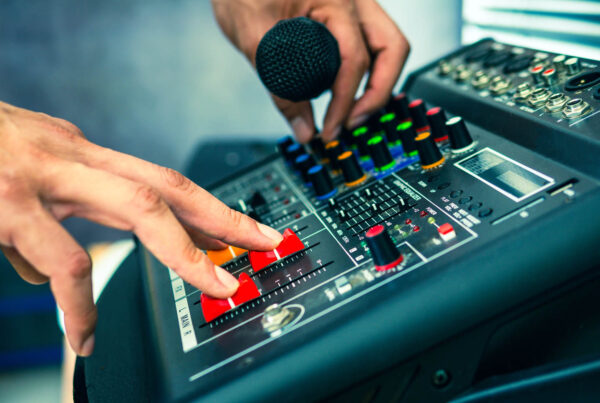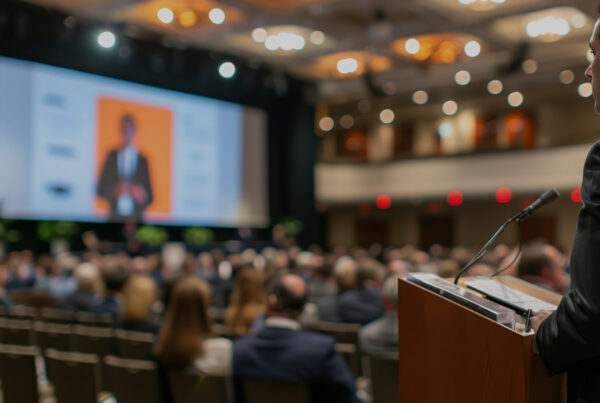Why Event Stage Setup is the Backbone of Your Event
Imagine attending a concert where you can hear everything clearly, but you can’t see the performers. Or a business seminar where half the room is struggling to read the presentation slides. These are all consequences of a poorly planned stage setup. A thoughtful Event Stage Setup ensures the message is delivered clearly and the experience is consistent for every guest. It directly influences:
- Visibility: Proper elevation and lighting ensure everyone sees the performance or speaker.
- Audio Clarity: Speaker placement and acoustics impact how well the audience hears the content.
- Engagement: A well-placed stage can help create a more intimate and interactive atmosphere.
- Safety: Clear pathways and well-structured platforms reduce hazards.
- Flow: A good layout helps performers, speakers, and attendees move smoothly through the space.
Step-by-Step Planning Guide
1. Understand Your Event Goals
What kind of event are you hosting? A conference will need a podium, screens, and perhaps a panel table. A concert may need risers for instruments, lighting rigs, and side wings. Weddings, trade shows, fashion runways, or theatrical productions each have their unique stage requirements. Define what success looks like for your event before you start designing.
2. Choose the Right Venue
The venue dictates many elements of your stage setup. Visit the site and note:
- Room dimensions and ceiling height
- Built-in lighting or rigging infrastructure
- Acoustic properties
- Power source availability
- Audience entry/exit points
For outdoor venues, consider weather, terrain, and the need for generators or protective covers.
3. Pick the Perfect Stage Layout
Each event type benefits from a specific stage format. Here are a few to consider:
- End Stage: Traditional format with the stage at one end, facing the audience. Ideal for concerts, seminars, or keynote speeches.
- Thrust Stage: The stage juts into the audience, increasing intimacy. Great for fashion shows or theatrical presentations.
- In-the-Round: The stage is in the center with the audience surrounding it. Excellent for panel discussions or immersive experiences.
- Runway: A narrow platform extending into the audience. Used frequently in fashion and talent showcases.
- Multi-Zone Layouts: Events like expos may use multiple stages in one space.
4. Determine Stage Size
The number of performers or speakers, size of props, and expected audience size will help you determine the ideal dimensions. Here’s a rough guideline:
- Small events (under 100 attendees): 12’ x 16’
- Medium events (100–300 attendees): 20’ x 24’
- Large events (300+ attendees): Custom size based on the program and venue
5. Lighting Essentials
Lighting does more than illuminate—it sets the mood. Key lighting options include:
- Front Lights: To highlight the speaker or performer
- Back Lights: To add depth and prevent flat visuals
- Spotlights: For focused attention on key moments
- Color Washes: To match the event theme or brand colors
6. Audio Setup and Acoustics
Sound is non-negotiable. Even the best visual production fails if the audience can’t hear. Hire a sound engineer or ensure your tech team understands:
- Speaker placement for even sound distribution
- Use of monitors for presenters or musicians
- Feedback control techniques
- Wired and wireless mic management
7. Visual Design and Branding
Your stage is a canvas. Integrate logos, banners, thematic elements, or digital displays to reinforce your brand identity. Be sure not to overcrowd the space—leave room for movement and sightlines.
8. Safety Considerations
Always ensure your stage complies with local safety regulations. Tips include:
- Sturdy stage structures and secure rigging
- Properly taped and hidden cables
- Accessible emergency exits and pathways
- Insurance coverage for equipment and liability
Pro Tips from Event Planners
“Plan for load-in and load-out as carefully as the show itself. Timing and logistics are everything.” – Maria Lee, Senior Event Manager
“Never underestimate the value of a walkthrough. Seeing your layout in the real world saves countless headaches.” – Dan Ortiz, Audio-Visual Consultant
Real-World Example: Corporate Tech Summit
At a recent tech summit, organizers used a 24’ x 30’ stage with dual projection screens, four wireless microphones, and programmable LED lighting. The layout included a side wing for breakout panels and a central podium. Attendees praised the clarity of the visuals and the energy created by the lighting changes.
Quick Event Stage Setup Checklist
- ✅ Choose layout and stage size
- ✅ Review venue limitations
- ✅ Confirm lighting and AV needs
- ✅ Schedule rehearsals
- ✅ Conduct safety checks
Final Thoughts
The impact of a great Event Stage Setup is undeniable. It frames the event, delivers the message, and creates a lasting impression. By carefully planning layout, sound, lighting, and branding, you’ll not only meet expectations—you’ll exceed them. Even beginners can create stunning stages by following these principles.
Need Help With Your Next Event?
Let us help you craft a unique Event Stage Setup that reflects your brand and wows your audience. Contact us today for a custom consultation.


